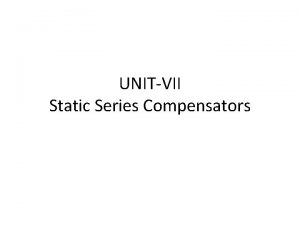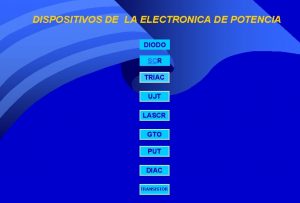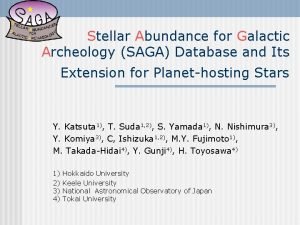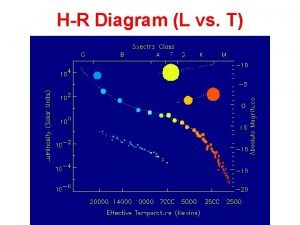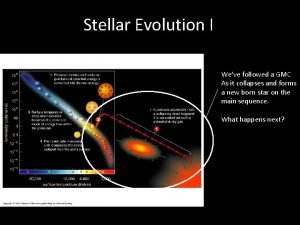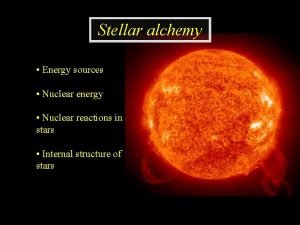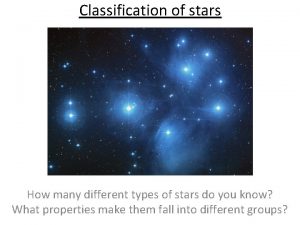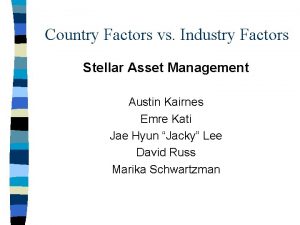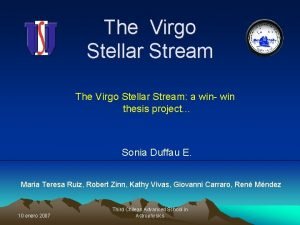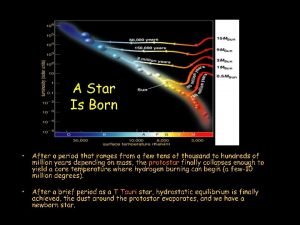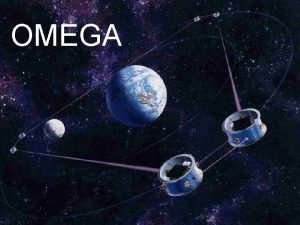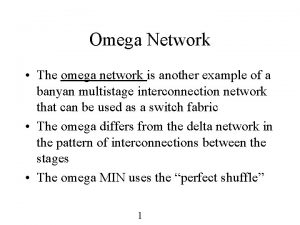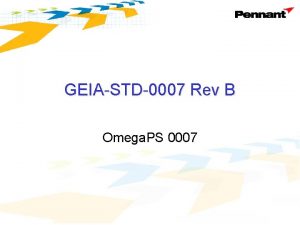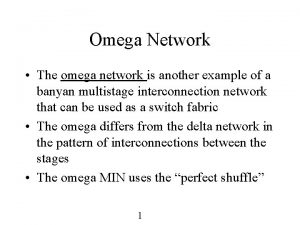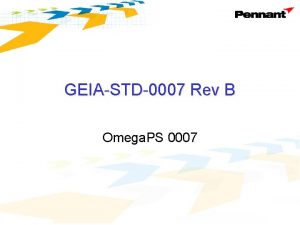The Stellar Omega CamITA GTO programs Omecacam GTO





















- Slides: 21

The Stellar Omega. Cam-ITA GTO programs

Omecacam GTO Italian share in the Omegacam consortium 25 % Total cash contribution 1. 14 M€ Italian Omegacam GTO: 12 night/yr × 10 yr (+ 10 VLT nights)

Omecacam GTO Title PI duration total 10 yr 20 yr SUDARE: Supernova diversity and rate evolution Cappellaro 3 120 40 40 OMEGA-WINGS: galaxy transformations in the infalling regions of galaxy clusters Poggianti 2 60 30 30 Photometry and astrometry of the Galactic globular cluster Omega Centauri Piotto 5 46 23 The structure of the Galactic external disk at low latitude Momany 2 35 An Omegacam survey of Local Group dwarf galaxies Held 4 128 32 32 389 125 137 TOTAL • Allocated ~45 of the 120 nights available • First two years over-subscribed by ~ 20 -30% 35

Supernova diversity and rate evolution Cappellaro E. , Benetti S. , Greggio L. , Zampieri L. Bufano F. , Agnoletto, I. Turatto M. , Inserra C. , Pumo M. L. , Botticella M. T. , Valenti S. , Pastorello A. , Patat F. - = SN 2000 fc type Ia z = 0. 42 V=22. 4 IAUC 7537

SN rate evolution Can be used to constrain the star formation history, models of galaxy chemical evolution, and supernova progenitor scenarios Thermonuclear (type Ia) Core Collapse Cappellaro et al. 2005 A&A 430, 93 Botticella et al. 2008 A&A 479, 49

Questions to address 1. SN Ia diversity with cosmic age (prompt vs. tardy events) cosmological distance scale 2. Core-Collapse diversity • massive star evolution • nucleo-synthesis • collapsed remnants 3. SN Ic hypernovae GRBs Our aim: measure properties of the events and their rates. Relate them to the parent galaxies

VST + Omegacam niche Star Formation Rate History JDEM VST LBT JWST

SUDARE Goal: Supernova detection and monitoring of ~200 SNe 3 yr monitoring of 1 sqdeg field at limiting magnitude 25 frequency filter exposure purpose detection every other day r 30 min light curve once a week g, i 30 min classification extinction Constraints: R. A. , > 5 days from full moon, seeing < 1. 4” 80 r + 30 g, i exposures/yr 8 nights/yr

Requirements time allocation 4 night/yr × 3 yr from Omegacam/GTO 4 night/yr × 3 yr from VST/GTO scheduling requirements service mode distributed over all year data delivery within 5 -7 days (to allow for follow-up)

OMEGA-WARP Momany Y. , Zaggia S. , Piotto G. , Ortolani S. , Carraro G. , Bedin L. , De angeli F.


• Warp maximum: 240 or 270 ? • What is the best stellar tracer to probe the warp ? • Comparison with models • Comparison of the stellar warp with that found for the gas and dust • A Mon. Ring—Flare connection ? • Details: peculiar distance-Vrad of CMa (Martin et al. 2005) ? • Details: PM of CMa vs warp (Dinescu et al. 2005) • Details: the FWHM of CMa (Martinez-Del. Gado et al. 2005) • Details: RR Lyrae in CMa ? • Conclusion: ….


Conclusions: CMa is almost surely of Galactic origin. • CMa is warp max. at 240 • Gas-dust-stars show similar warping (amplitude & phase), arguing against an accretion • warp amplitude differences

OMEGACAM: address the origin and evolution of the warp Observations of old (10 Gyr stars) & comparison with 2 MASS results. Warp origin: (i) accretion of satellites; (ii) cosmic infall; (iii) intergalactic magnetic field; (iv) accretion of intergalactic medium Revaz & Pfenni



OMEGACAM • 3 stripes 2 x 20 degrees long across the disk • 2 colors g, i down to g=23. 5. • along the path of the Carina orbit. • requested 65 hours to complete (35 omegacam + 35 STEP)

WFI Observations already done by other groups in the last years With a baseline of 5 -7 years It will be possible to do ~5 mas Precision PROPER MOTIONS


GOALS: • extend the knowledge of the stellar population and star formation history of the disk out to its outer edge (15 -20 kpc from us) in the direction of the south warp • have a clear view of the vertical and structure of the outer disk • understand the origin of the warp. • 35 hours assigned on the second year. REVISIONS • sinergies with the VISTA surveys and VHPAS
 Esansiyel aminoasitler
Esansiyel aminoasitler Essential lipids
Essential lipids Gto tirisztor
Gto tirisztor List of static series compensators.
List of static series compensators. Diak va charakteristika
Diak va charakteristika Fototyrystor
Fototyrystor Gto scr
Gto scr Gto tirisztor
Gto tirisztor Cpmcd in software engineering
Cpmcd in software engineering Stellar saga
Stellar saga Stellar heaven
Stellar heaven Stellar formation
Stellar formation Stellar motion matlab
Stellar motion matlab Life cycle of stars poster
Life cycle of stars poster Stellar evolution
Stellar evolution Stellar alchemy
Stellar alchemy What is stellar parallax?
What is stellar parallax? Astronomy
Astronomy Stellar asset management
Stellar asset management Virgo stellar
Virgo stellar Iptv hosting
Iptv hosting Hr diagram
Hr diagram



